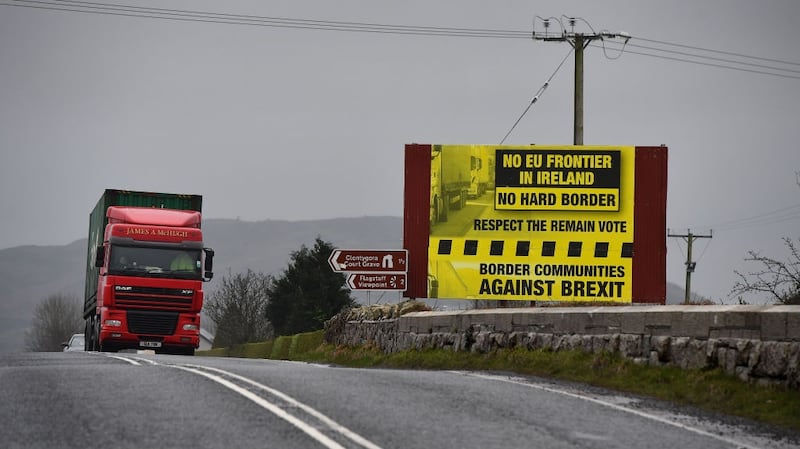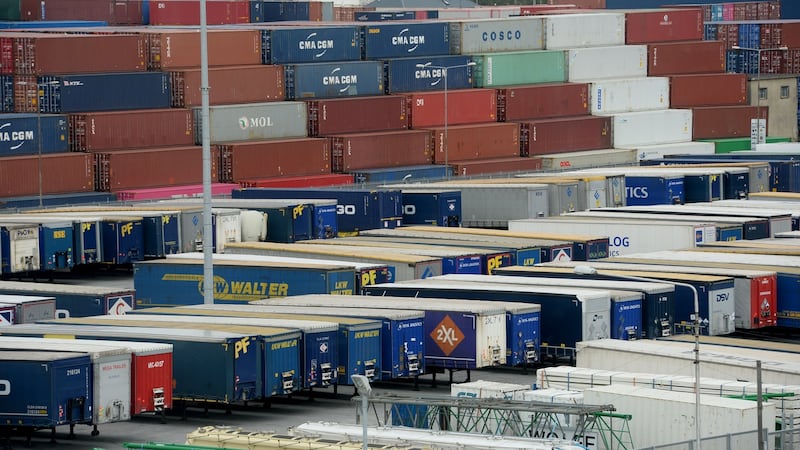The Irish trade figures for the first six months of the year show some remarkable swings in trade with Northern Ireland and with Britain. Exports to Britain are up 20 per cent in the first fix months to €6.7 billion, but imports have collapsed by 32 per cent to €5.3 billion.
Meanwhile trade between the Republic and Northern Ireland has jumped, with exports up 38 per cent in the first six months to €1.58 billion and imports soaring to €1.774 billion, from just under €1 billion in the first six months of 2020. So what on earth is going on?
Are we looking at temporary shifts which will mostly disappear or a fundamental change in trading patterns?

1. The Brexit effect
There was an undoubted impact on the figures when the UK left the EU customs unions and single market at the start of this year. Companies on all sides had been stockpiling product ahead of the imposition of the new trading regime and expected delays.
Looking at imports to Ireland from Britain, for example, while these are down by more than 30 per cent for the first six months, they are down just 16 per cent in June alone. So the rate of decline , while still striking, is falling as precautionary stocks put in place by Irish companies run down.
We can’t be sure yet where this will settle. But the figures do clearly suggest a long-term Brexit impact, for exactly the reasons economists predicted.
Even through there are no customs duties on most trade, new bureaucracy, customs requirements and – in the case of food and animal products – special safety checks and rules – on trade between Britain and Ireland are clearly having an impact.
And duties do apply on the import of goods not originating in the UK and complicated rules here add further compliance burdens.

2. So what aren’t exports to Britain being hit?
The big increase in exports to the UK during the first six months has been in the chemicals sectors, accounting for some 60 per cent of the overall increase. However there have also been increases in sectors like machinery and manufactured goods. Exports to Britain of foods and live animals are down 4 per cent, however.
The big test for exporters may lie ahead, though, as the UK has not imposed full checks on imports from EU countries into its market and plans to phase these in over the next six months.
More stringent checks on animal products, including pre-notification of shipments, comes into place in October, with further tightening of rules on animal and plant imports in January and March.
Meanwhile full customs declarations and the requirement to pre-lodge customs declarations before goods leave Ireland comes into place next January. Delays at ports may again be an issue.
In other words the kind of regime put in place for imports into Ireland from Britain last January – which has had a clear impact – will apply to goods entering the UK from next year.
British exporters were certainly not ready for this, said Carol Lynch, partner at BDO and if Irish exporters are not ready they will face the same problems. This is going to be a particular issue for exporters of food-based products, she said, who will face new requirements being phased in from October.
Meanwhile exporters to the UK will need to be ready for the new customs rules from next January, with Lynch pointing out that some are currently benefiting from deferred customs relief, which is due to end next year.
One third of Irish businesses see the UK as a key market for export growth, according to a survey by Grant Thornton, indicating that while there is still interest in our neighbouring market , a majority are looking elsewhere now for new opportunities.

3. Are we seeing a new boom in North-South trade?
The figures for cross-border trade are really striking, even allowing for the fact that there are undoubtedly temporary factors at play here. Northern Ireland has a unique position remaining in the UK customs union, but also part of the EU single market for goods, said Jarlath O’Keefe, head of indirect tax at Grant Thornton.
The near €800 million in imports from the North in the first six months reflects Irish companies seeking new suppliers to replace those in the British market, he said, with companies also restructuring existing supply chains for the delivery of products.
“This is only going to increase in the months ahead”, he believes, offering significant opportunities for companies in Northern Ireland.
Companies who bring product in through the North intended for the Republic have to go through customs procedures . How these are applied – and the treatment of goods designed for just the Northern Ireland market versus those travelling onwards – is a central issue in the dispute on the Northern Ireland protocol.
However the scale of the change in trade in the first six months does suggest that as well as companies in the Republic buying more from Northern supplies, there is a re-routing of supply lines.
Some trends are hard to fully explain. Looking at three big food products, for example, dairy, meat and cereals, imports from Northern Ireland have increased by some €142 million in the first six months of this year, a rise of more than 70 per cent.
On the flip side there have been significant falls in imports from these three sectors from Britain. We should note , though, that in cash terms the fall in imports from the Britain is much larger than the rise in imports from Northern Ireland.
Meanwhile Irish exports to Northern Ireland are being boosted, sources say, by Northern companies sourcing more product in the Republic, to replace goods from Britain, now subject to checks under the Northern Ireland protocol.
4. The bottom line
Caution is needed in interpreting the statistics. Economists point out that not only is Brexit itself a factor but it has also changed the way trade statistics are collected on UK/Irish trade – a point underlined by the CSO.
Also, Covid lockdowns had a big impact on 2020 data and so comparisons are tricky. All that taken into account however, the patterns on cross-border trade are very striking and do indicate some fundamental shifts.
Meanwhile both Lynch of BDO and O’Keefe of Grant Thornton underline the challenge to Irish exporters to Britain as new rules come in over the coming months – assuming they are not postponed.
They underline that not only do Irish companies need to have their house in order, they also need to ensure that their British customers do too.
We have seen a big hit to imports from the UK in the last year. Gerard Brady, IBEC chief economist, points out that the share of Irish imports coming from Britain has fallen from 20 per cent in the first half of 2019 to just 11 per cent now.
The increase in the share of Irish imports coming from Northern Ireland , meanwhile, has increased from 2.6 per cent to 3.7 per cent over the same period. So imports from the North have risen sharply, but in cash terms the British market remains vital.
And as Brexit checks are introduced in Britain, we will hope not to see as big a hit to Irish sales into that market as happened in the opposite direction over the past year.
















